2 weeks ago, we introduced you to seven SaaS Pricing Models that you could utilize to optimize your price and revenue. This week’s article is a continuation of our SaaS Pricing series, focusing on SaaS Strategies to boost growth. While your SaaS Model provides the foundation of your business sales processes, your strategy is the tool that will help hit your over-arching growth goals. Each of the strategies below is suited for a different business objective – whether that be building a high-value brand or expanding into a new market. Without further ado, here are seven SaaS Price Strategies to add to your toolbox:
1) Penetration Pricing
To quickly gain a larger share of your target market, consider employing a penetration pricing strategy by reducing prices / offering extremely low initial pricing. This gives you a “first mover” advantage that attracts customers away from competitors. Though dramatically low prices are often unsustainable, companies try to use their scale to later upsell and cross-sell across their portfolio to make up for lost revenue. If prices do increase, there is a risk of losing more price-sensitive customers, especially when competitors offer a cheaper deal.
Example: When Netflix first entered the market, they offered subscriptions at a relatively low price to attract customers and get a large portion of the market share. Today, Netflix is the market leader, responsible for 51% of streaming subscriptions in the US and with a loyal customer base, having increased prices over the years.
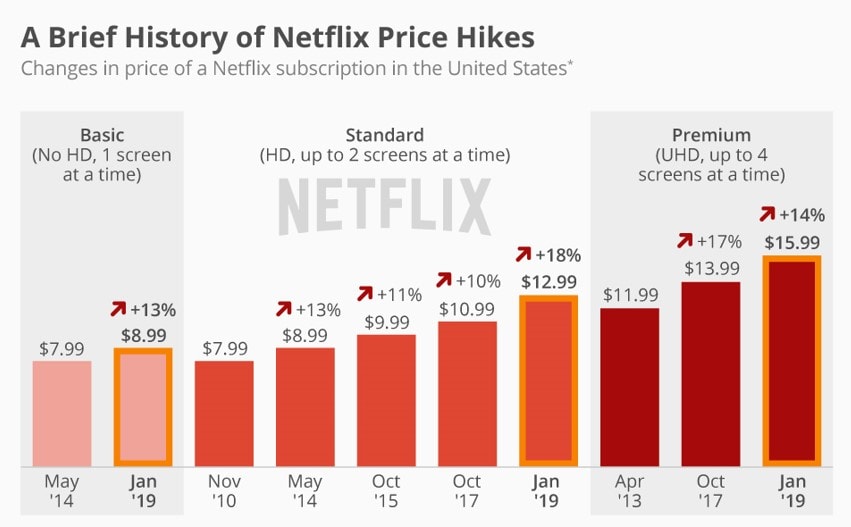
Source: Statista
2) Price Skimming
Price skimming (also known as promotional pricing) is a strategy that sets a high initial price during the launch of a product with a steady decline over time as the product loses its novelty. Price skimming is often referred to as “riding down the demand curve”, where the product’s price is lowered progressively to appeal to different customers with different price expectations. This pricing strategy works because early adopters pay more for first access to new products. As the product matures and declines, prices are reduced to appeal to the more price-conscious, late adopters.
Example: In the early years, Salesforce employed a price skimming philosophy for their CRM. The upper tiers of its market, such as enterprise-level clients enable Salesforce to generate high revenue quickly. Later on, Salesforce switched focus to SMEs looking to use CRM.
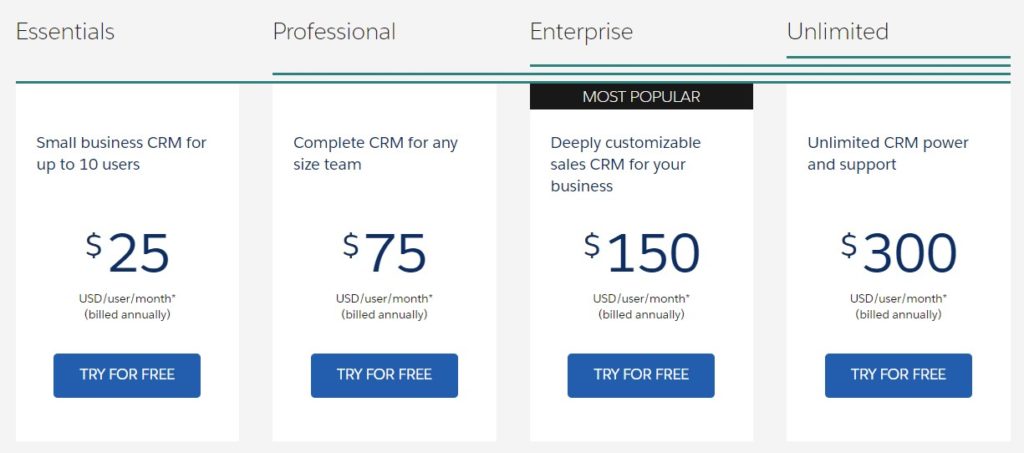
Source: Salesforce
3) Value-Based Pricing
A value-based pricing strategy moves to a holistic framework that accounts for perceived value and willingness to pay rather than margins. It is helpful to identify your unique selling points to understand the additional value you bring to customers versus competition. Value-based pricing allows you to charge a higher price (unlike cost -plus) and gives you opportunities to increase prices as perceived value increases.
A close understanding of the customer is required for value pricing, requiring that you understand their purchase journey, price elasticity, competitor consideration set, needs, and relative perception of each offer.
Example: Drift, a conversational sales & marketing software company has pricing plans tailored to specific user needs. With the diverse range of options to choose from, Drift understands that people find different values in their products. It is clear Drift has taken its time to deeply analyze what customers trade-off between.
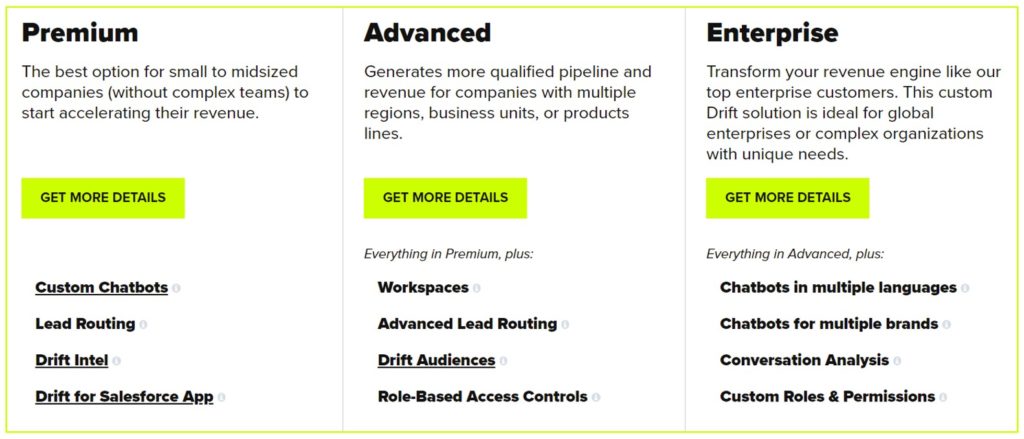
Source: Drift
4) Captive Pricing
Captive pricing (or captive product pricing) offers core products at a lower price but charges more for additional accessories. To use the core product, the product must be accompanied by the accessories, requiring multiple purchases from the customer – hence the term captive product. Captive product pricing increases sales of both the core and accessory products which boosts your top and bottom line. Customers also become loyal over time as they become accustomed to the specific set of core products and accessories.
Example: HubSpot began with a core product – their CRM. Yet, most of the functionality such as marketing, sales, or automation was put behind a paywall, encouraging customers to upgrade. These add-ons serve as the “accessories” to the core product, and both are needed to have an adequate inbound/outbound business strategy.
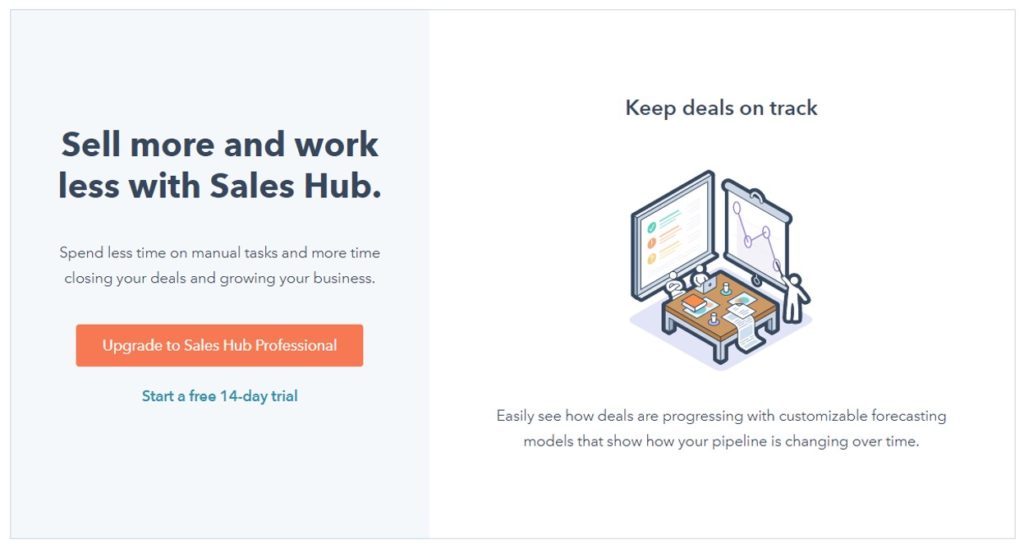
Source: Hubspot
5) Prestige Pricing
Alternatively called premium pricing, prestige pricing strategy involves maintaining high prices relative to the market so customers will associate their product with quality or luxury. If customers perceive your product to be high quality, you will obtain higher revenue and profits because of it. You may not even require many customers as fewer customers at a higher price brings more revenue than many customers at a lower price point.
There are options to build a perception of prestige for your brand. One of the best ways is to differentiate yourself based on reputation especially if your brand is well-known or your products are being used by high-profile companies allowing higher prices to be set for these products.
Example: Asana and Zepel are both productivity management tools designed to help teams organize and manage their tasks. While both have a free basic version of their service, Asana charges approximately 100%-400% more than Zepel for their paid options. Asana also has a larger market share compared to Zepel – owning 2.44% compared to <0.01%. Both pricing and reputation have allowed Asana to be the go-to for productivity management.

6) Cost-Plus Pricing
To make a profit, you must sell higher than what it costs to make. Cost-based pricing bases the price of a product on the cost of goods or services sold plus an additional profit percentage. This pricing strategy is easy to adopt. No additional market analysis is needed, and it ensures the cost of production is consistently met.
However, using cost-plus pricing ignores the inherent value of an offering and ignores the needs of the customer and the market. Price is linked to input costs which are not only volatile but are totally devoid of customer needs. This strategy ensures you will always be under and over-priced.
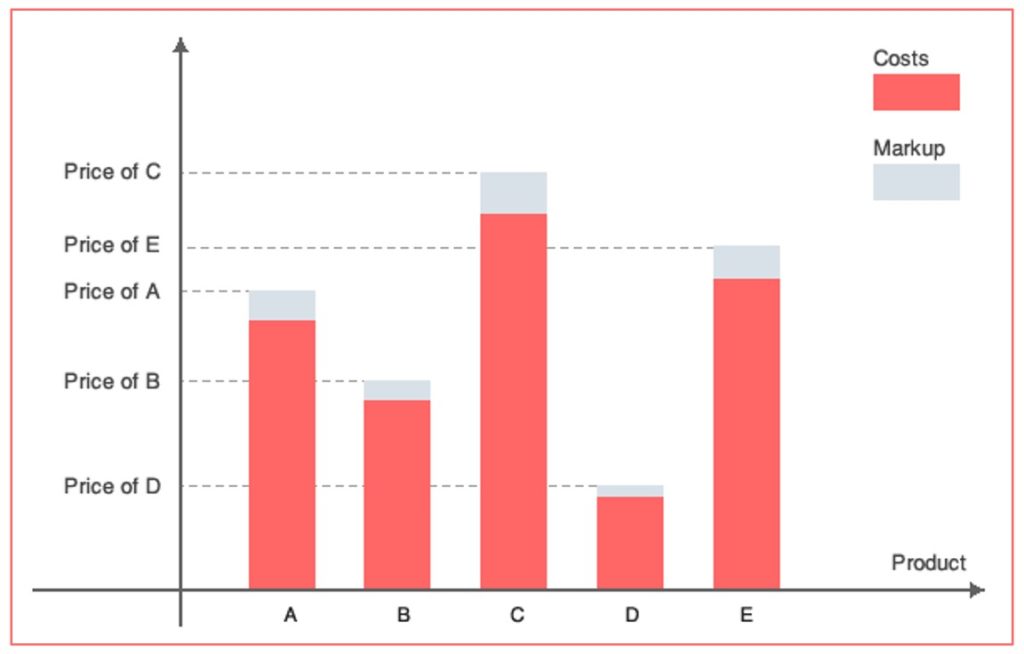
Source: Lokad
6) Free Trial Pricing
This would not be a SaaS Pricing article without the mention of freemium or free trial pricing – a staple for SaaS companies. Offering free products for a limited time gets your foot in the door and provides a strong incentive to upgrade after the trial ends if the customer benefits from your offering.
Free trials usually last between 5 to 30 days but know that half of all free trial upgrades occur after the trial period. Thus, it is important to create a well-established follow-up sequence to give your customers opportunities to upgrade.
Example: Sketch is a digital design platform that offers a 30-day free time where users have access to all features without limitations. Customers don’t even have to put in payment information, which helps create more sign-ups. After the 30-day ends, users are prompted with upgrade messaging to convert users to fully paying clients.

Source: Sketch
Final Thoughts
Now that you understand the different types of SaaS Pricing Models and Strategies, you must make sure you employ the right one for your company to meet your revenue and growth goals. Do not be afraid to explore different models and strategies – remember that your pricing requires constant evaluation. When customers’ needs change, so should your price.
If you would like Revenue Management Labs to come alongside and help you maximize your revenue by tailoring the perfect SaaS pricing strategy for your unique customer segments, get in touch today!
ABOUT THE AUTHOR Michael Stanisz is a Partner at Revenue Management Labs. Revenue Management Labs help companies develop and execute practical solutions to maximize long-term revenue and profitability. Connect with Michael at mstanisz@revenueml.com




